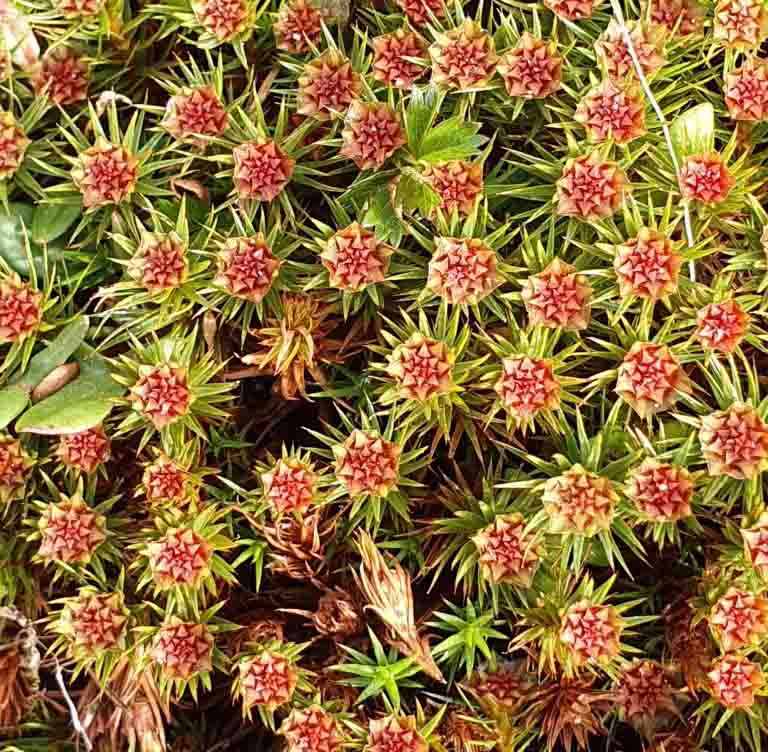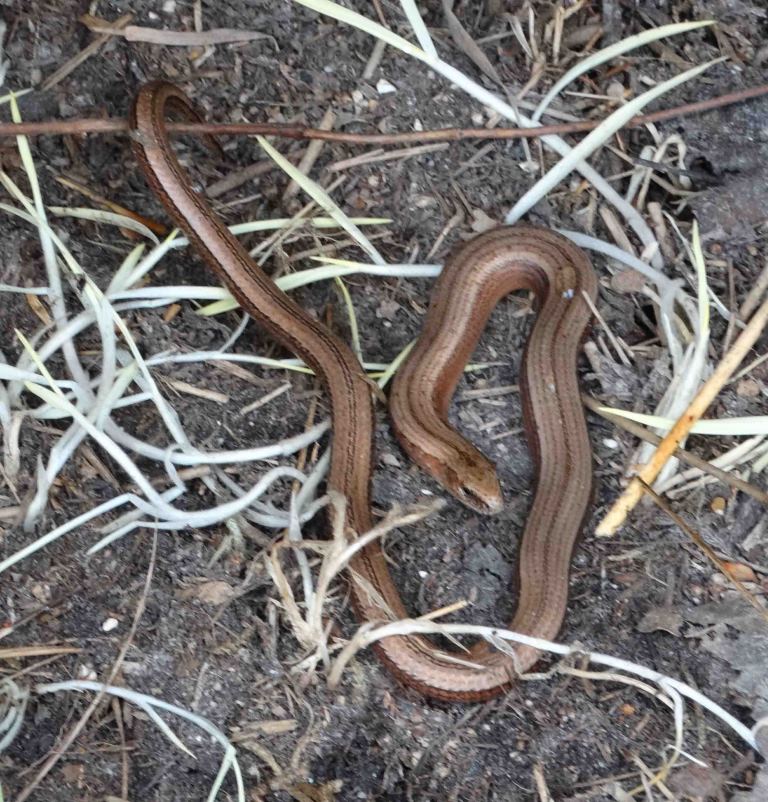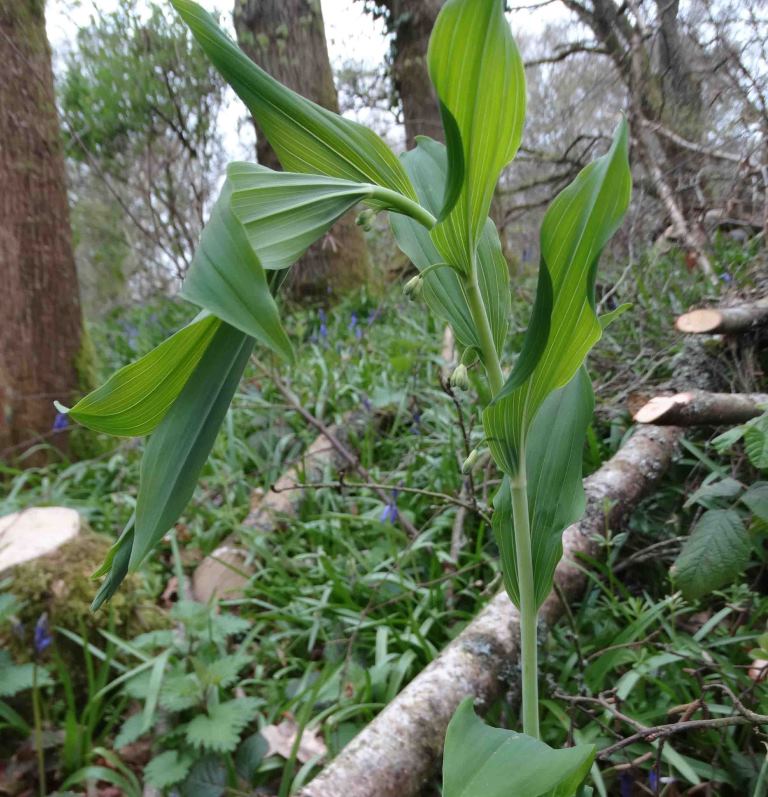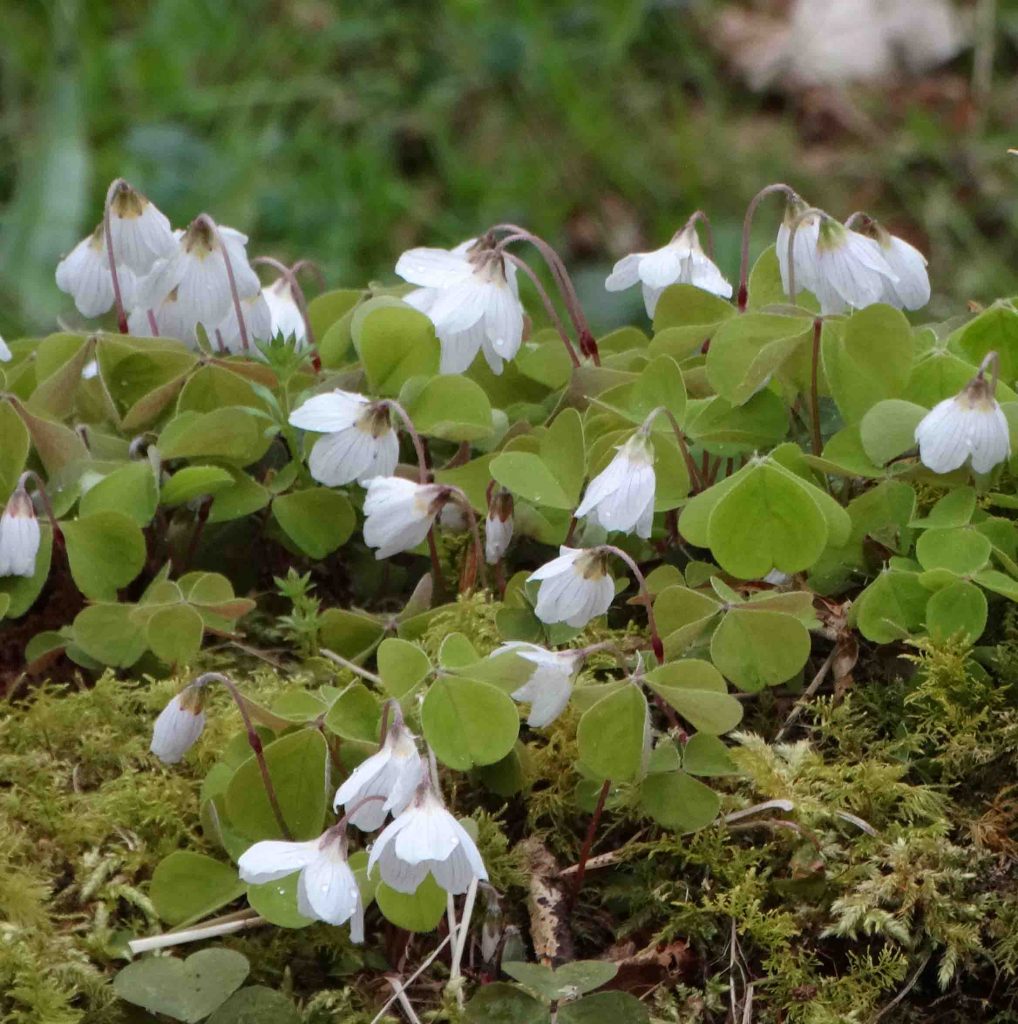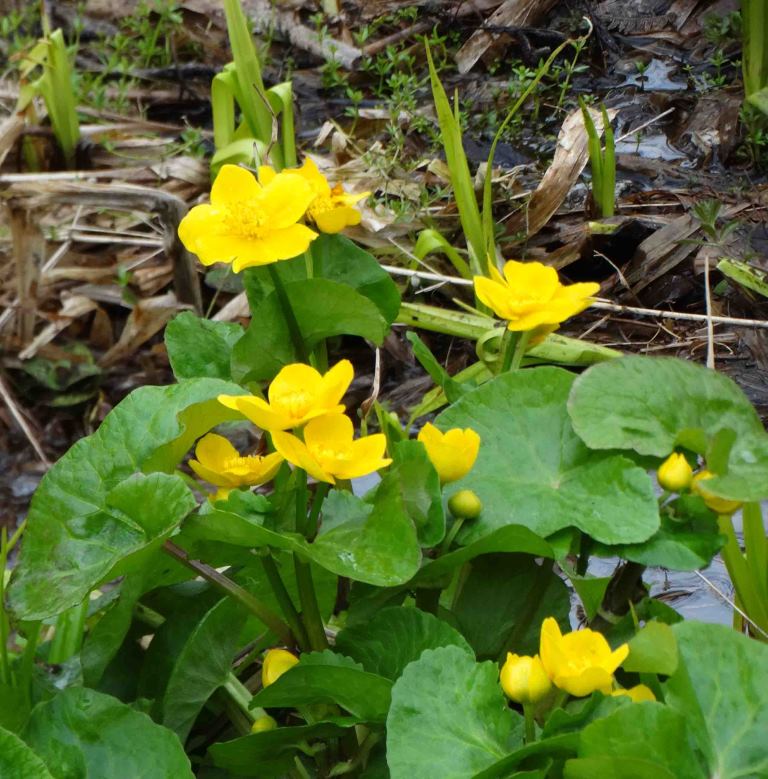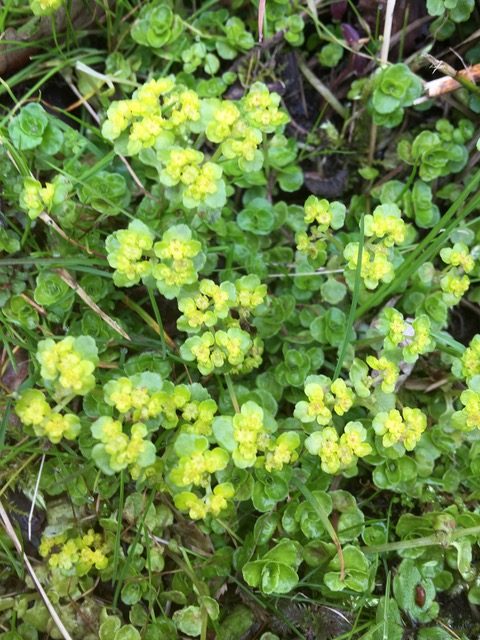Volunteer warden Roger Dobbs led a walk at BBOWT’s Bowdown Woods reserve on Saturday 10 April, with Jan Haseler taking a second group round as well. On a cold, grey morning, the walk started out along a track across the Bomb Site. Dense blossom covered the Blackthorn thicket next to the track; Blackcap, Chiffchaff and Nuthatch were heard and a Buzzard drifted overhead. To the left of the track is a grassy area which is kept open by mowing. A distinctive moss, with bright reddish-orange flower-like structures on the tips of the shoots, was found on the path. Sean O’Leary identified it from a photograph as the male form of Juniper Haircap Polytrichum juniperinum. The walk continued through an adjoining open scrubby area, with Heather, Gorse, Bramble and encroaching birch. Roger explained that various grazing regimes, with cattle and ponies, had been tried to control the scrub, but the animals ate the grass and ignored the woody material, so now it is managed by cutting. There was abundant Wood Sage, a small Holm Oak was inspected and a Slow-worm was found under a metal sheet. The route led back onto the track round the Bomb Site. Moschatel was abundant here, leaves of Pignut were found, the first Bluebells were coming into flower and there were Wood Anemones and a few plants of Solomon’s-seal. The track went past the ammunition storage areas, where high banks between the bays were intended to limit the extent of potential accidents. The next path led down to an open grassy area, the former site of a shooting range. It is mown occasionally and drifts of Common Spotted-orchids can be seen here in early summer. The vertical sandy slope above the former target area is a good place to look for solitary bees. At the far side of the clearing is a pond where newts are sometimes seen. The walk continued down a steep south-facing cleared ride. A vole was spotted amongst a pile of logs and Wood Sorrel, Common Dog-violet and Wood Spurge were seen on the way down. The path crossed the stream at the bottom of the valley and then climbed up onto the next ridge, where Roger showed the group a newly created coppice clearing. Thin flexible stems had been left on the Hazel stumps. These would then be bent over and buried a few metres from the parent stool to try to increase the density of Hazel within the plot. He pointed out the contrast between the dry coppiced area on the ridge, with its ground cover of Bluebells and Yellow Archangel and standards of Oak and Ash, and the damp stream valley beyond with tall Alders and no Bluebells. The group re-traced its steps and then continued along the cleared area below the power lines. There were rosettes of Marsh Thistle and, in the wetter patches, big clumps of Opposite-leaved Golden Saxifrage. A single clump of Marsh-marigold was found in a particularly wet spot. Song Thrush, Green Woodpecker, Nuthatch, Wren, Raven and a drumming Great Spotted Woodpecker were heard. Roger commented that the ride under the power lines is a good place to see Silver-washed Fritillary butterflies in summer. At one point, another power line comes in at right angles. With the extra light here, this is the only place along the power line ride where Common Blue butterflies are recorded. Roger then led the group back across the stream and into an area of Hazel coppice on the south-facing hillside which is being managed for Dormice. The area had not been coppiced for about 70 years. It was divided into four plots with a single plot being coppiced in each of 2011, 2015 and 2019. The last section will be coppiced in about 3 years. The objective is to rejuvenate the Hazel coppice for Dormice with minimal disturbance to them. Each plot has a collection of Dormouse boxes, which are strapped to Hazels with the entrance hole up against the tree trunk. On the walk back to the path, a few plants of Alternate-leaved Golden Saxifrage were found amongst the longer grass and nettles on the bank of the stream. They had larger flowers than the much more widespread Opposite-leaved Golden Saxifrage, and a single leaf on a longer stem. The route then led steeply up the south-facing side of the valley and past several mature Beech trees. A few flowering plants of Hairy Wood-rush were found beside the path. The final section of the walk followed the Bomb Site track back to the car park.
Pictures by Laurie Haseler and Inge Beck

